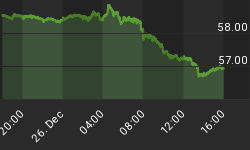French President Sarkozy wasn't kidding when he promised to shock the markets with a series of measures aimed at containing the sovereign debt crisis. Europe got the bazooka former U.S. Treasury Secretary Paulson always wanted. German chancellor Merkel and European Central Bank (ECB) President Trichet control the bazooka's safety. What are the implications for liquidity and solvency issues? The euro and U.S. dollar?
The decisions were breathtaking - literally so, as wheelchair-bound German finance minister Schauble was rushed to hospital after almost suffocated due to an adverse reaction to new medication. Those thinking such an emergency would weaken Germany's hand were quickly proven wrong: Germany's interior minister de Maziere was an even more stubborn negotiator. As the package to support weaker eurozone countries grew, Germany dug in its heels, requesting that any country asking for support must meet International Monetary Fund (IMF) terms (read: severe austerity measures). Germany insisted that those contributing to the emergency facility must go beyond guaranteeing the debt of weaker countries and actually provide access to credit. It is our understanding that, as of Sunday night, no final agreement was reached on the mechanism. However, total fiscal commitments are approximately EUR 770 billion or US$ 1 trillion, in our assessment well above the funding requirements of all weaker eurozone countries for the coming years. Beyond existing commitments for Greece and (an older facility) for Eastern Europe, we are talking about a fresh commitment of EUR 500 billion by governments and over EUR 100 billion by the IMF.
For better or worse, those who said Europe couldn't act have been proven wrong. Europe put in place a de facto central fiscal authority over the weekend. Germany is fighting to ensure that control of the facility will remain with the member countries, i.e. Germany has to agree to how its money is spent, but this may well morph into an independent body to spend money over time.
Merk Insights provide the Merk Perspective on currencies, global imbalances, the trade deficit, the socio-economic impact of the U.S. administration's policies and more.
The Archive:
Read past Merk Insights
Very relevant is that part of the package are new austerity measures announced by weaker European countries (with the exception of Ireland) ranging from 0.5% to 1.0% of the respective GDPs for this year in addition to similar cuts next year. Portugal, for example, will tighten its belt by 1% of GDP this year, amongst others by cutting public infrastructure spending; Italy announced measures to cut expenses by 0.7% of GDP both this year and next; Spain will cut expenses by 0.5% this year and 1.0% next year.
Not to be trumped, the European Central Bank (ECB) joined the fray and announced:
-
A re-opening of select emergency lending facilities.
-
A re-opening of USD swap lines with the Federal Reserve (Fed) and major central banks around the world, ensuring European banks have sufficient access to U.S. dollar credit.
-
A program for the ECB to have its Governing Council decide on the purchase of government and corporate debt to ensure "depth and liquidity" in the markets. Any ECB action is to be sterilized.
It looks like the ECB has "learned" from the Fed playbook: the ECB says it won't buy government bonds to lower yields, but to ensure "depth and liquidity". Important is the sterilization component: the ECB may issue its own debt in return for buying other debt in the market. If conducted properly, any money "printed" will immediately be absorbed again. This mechanism is a giant leap for the ECB. Notably, the ECB must have judged that this announcement was necessary because the markets know the ECB can act immediately, whereas the heads of government have yet to come to an agreement on the implementation of emergency credit lines (which may take some time); drawing the credit lines may have become a self-fulfilling prophecy without the ECB support.
What does this all mean? These facilities provide liquidity to a market that had frozen up. At the end of last week, banks in Europe were screaming for help, as no one wanted to deal with banks with exposure to any weaker European country.
This mechanism will buy Europe time, but it does not solve structural solvency issues. However, steps to address structural issues have been taken with the announcement of further fiscal consolidation. Our fear is that the relief provided by the announced programs may take the pressure away to actually follow-through with the cost cuts. It is in this context that Germany once again, with its insistence of IMF involvement, appears to be showing appropriate leadership.
















